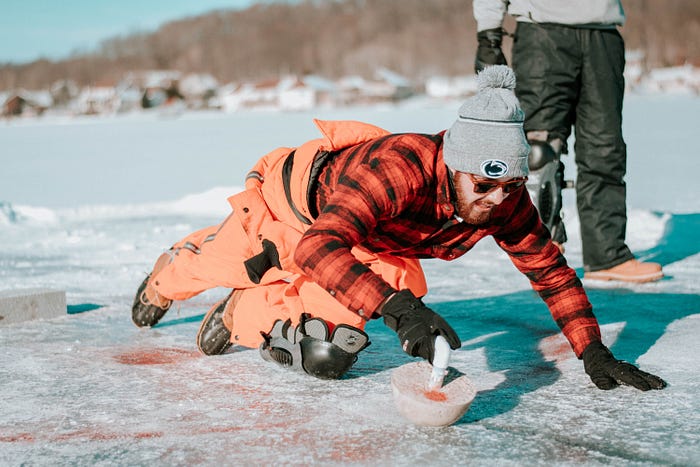Curling Robot Beats Top-Ranked Human Teams

The sport of curling has a new champion, marking a big win in the world of AI machines. Curly the robot is an AI robot who recently defeated top-ranked human curling teams. It was developed by a joint German and South Korean research team.
While it’s exciting to hear that a machine has become adept enough to outperform professional athletes, there’s more to the story than just a heroic new sports hero.
Why Curling?
Curling is arguably more obscure than other sports, like soccer, basketball, and American football. Why did researchers decide to use AI in this sport out of all the options available?
It’s a good question. For those unfamiliar with the sport of curling, it’s often referred to as a combination of chess and bowling, relying on strategy and smarts as well as strength and agility. Two teams toss large stones across 150 feet of ice, aiming at a target. This requires team members to make precise physical movements based on quick strategizing.
Once stones are in place, teams try to knock each other’s stones out of the target zone. They use brooms to impact the stone’s speed and path, which is one of the more entertaining aspects of the sport.
Curling’s strategic component made the sport appealing to researchers who want to study AI and human behavior side by side. On a larger scale, Curly is an experimental robot that researchers believe can help them explore how AI interacts with humans in real-world scenarios.
Researchers explain that curling is a prime sport for AI experimentation because its environmental characteristics constantly change from one moment to the next. Each move a human (or robot) makes directly impacts the match’s outcome. Even further, there are strict timing rules in place in curling. That means there is no opportunity for a machine to stop and relearn how to do something in the middle of a game. It needs to make real-time adjustments based on its experiences.
How Curly Operates
Curly the robot is actually made up of two robots. There is a thrower-curly that throws the stone down the ice. Then, there is a skip-curly, which assesses the stone's position. The two robots, or Curly, successfully beat professional human teams three out of four times by working together.
Curly and its human opponents' critical difference is that Curly lacks arms. This means it cannot use a broom to sweep the stone down the ice.
To counter this, South Korea’s team did not use brooms in the matches it played against Curly to level the playing field. Would the outcome have been different if the human teams had used their arms? It’s impossible to say at this point.
Curly moves on wheels. It has two cameras. One gives the robot an aerial view of the ice by raising up to seven feet high. The second camera sits lower down at the robot’s front wheels. These cameras are integral to Curly’s success. They work together to help Curly calculate each throw. Curly’s researchers had taught its strategy before the competition through simulated games.
Curly can correct its mistakes in real-time and change moves based on the information it receives during a live match. However, it will not experiment in real-time and instead relies on the training it has received from its human researchers and, now, its real-world experiences competing against human teams.
Conclusion
While Curly’s defeat is big news, it’s unlikely that we’ll see robots replacing humans in sports any time soon. Researchers will use what they have learned from Curly and apply it to other AI aspects to improve how AI and humans communicate and interact with each other.